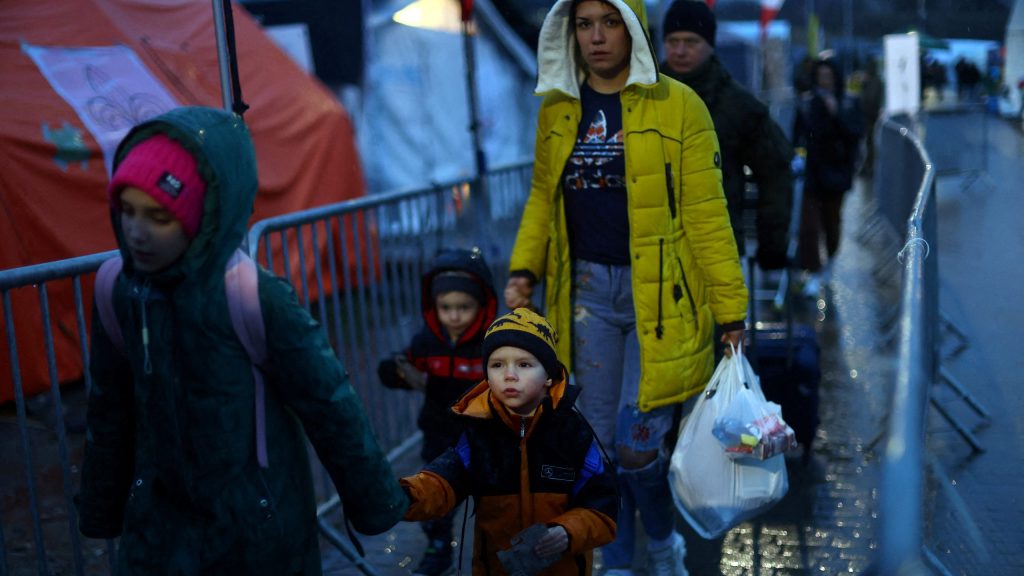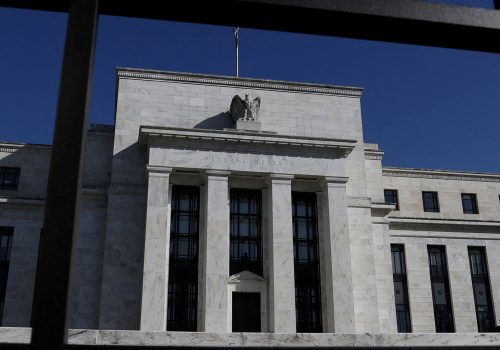Ukraine has received an outpouring of global support—from weapons to volunteer soldiers—as it bravely battles Russia’s war machine. But there’s a less obvious way in which it has sought and gained help: more than one hundred million dollars in cryptocurrency donations for humanitarian relief and defense.
Days after the Ukrainian government tweeted that it was accepting donations in crypto and shared its wallet addresses, the Ministry of Digital Transformation began accepting Bitcoin, Ether, SOL, DOGE, DOT, and other currencies. Local nonprofits and individuals have also received cryptocurrency funding, and some of the money has been used for the military, including for new uniforms, gear, and meals.
While it’s not the first country to have received crypto assistance in its hour of need, the volume of aid through crypto that Ukraine has received is unparalleled.
The country’s ability to tap into this form of aid isn’t surprising, since it’s a global leader in adopting crypto. Ukraine is also fairly far along in developing its Central Bank Digital Currency (CBDC), the e-hryvnia, meaning it may soon have a range of options to transmit money faster to citizens—and proving it has the financial infrastructure for digital cash to flourish.
Ukraine’s current experience showcases the possibilities and challenges ahead for the industry, and could transform how aid is disbursed across the world. It could also help the sector demonstrate a side to crypto that policymakers and regulators often miss in their focus on these currencies as a mechanism for illicit finance.
Crypto channels to Ukraine
On February 28, the Ukrainian government authorized “Aid for Ukraine,” a decentralized autonomous organization (DAO) in collaboration with blockchain service Everstake and crypto trading firm FTX Trading Limited, to collect cryptocurrency. Solana was one of the first blockchain platforms to join the community, which now includes Bitcoin, Ethereum, Doge, Tether, and others. A Ukrainian crypto exchange platform, Kuna.io, helps the government manage donations.
More than 60 percent of all donations (around sixty million dollars) have traveled through Kuna.io to the government, which has primarily used them to purchase non-lethal military supplies. The government uses suppliers willing to accept crypto and converts some of the money to dollars and euros. So far, fifteen million dollars have been spent on military supplies.
But the government-approved route to crypto aid is not the only avenue. UkraineDAO, a collective effort of private platforms PleasrDAO, Trippy Labs, and Pussy Riot, is raising crypto funds for the Ukrainian Army. In one effort, it collected $6.75 million, largely in ETH, for a non-fungible token (NFT) depicting the Ukrainian flag. Crypto donations are also supporting NGOs: Unchain Fund, for example, offers wallets requiring multiple signature-based approvals to provide greater security in spending collected funds.
Donors come from across the blockchain world, from small crypto holders and institutions to whales—those who hold large amounts of a particular cryptocurrency. For instance, Polkadot founder Gavin Wood donated $5 million worth of DOT to the Ukrainian government, while Binance promised to donate $10 million to nonprofits providing humanitarian aid to refugees and children, and FTX donated $25 to every Ukrainian registered on its platform.
Yet most aid is from small donors, demonstrating the broader power of the global crypto community. The average donation sizes of Bitcoin and Ether to the Ukrainian government are around $650 and $250 respectively.
The challenges of crypto aid
Despite the short-term benefits, the surge of crypto donations to Ukraine has also highlighted some key challenges.
For one, the ability to convert from crypto to a fiat currency remains a critical hurdle. Aid must often be routed through centralized institutions, such as the Ukrainian government or groups like UNICEF, which partner with crypto exchanges like FTX to accept and convert crypto donations to fiat. Direct aid to Ukrainian citizens, by contrast, relies on peer-to-peer support or local cash-out options. This is difficult in the midst of an invasion, when retail banks are closed and cash-delivery networks are not operating normally. In some cases, scammers have taken advantage of this situation by soliciting donations from unsuspecting users and falsely promising to send the proceeds to Ukraine.
Another challenge has been the use of aid for profit-maximizing purposes. The humanitarian crisis highlights the worst aspects of the crypto industry—particularly the temptation to make quick money. Early users of crypto projects are often rewarded with tokens that incentivize them to take risks and try out new crypto initiatives. This reward, called an airdrop, can amount to sizable returns. Unfortunately, this mentality has permeated Ukraine’s humanitarian crisis: After the government in Kyiv announced an airdrop to reward donors with Ukrainian crypto tokens, a large influx of microdonations were sent simply to meet the requirements for the airdrop and make a financial return.
For example, Justin Sun, the controversial founder of blockchain platform TRON, complained that its users were excluded from the airdrop: He wanted them to earn a financial return for donating to Ukraine, while also pushing for the TRON token’s wider acceptance, thereby boosting its perceived value.
Lastly, while stablecoins are a viable donation option, much of the crypto aid has been in the form of tokens with fluctuating values. This can make it difficult for individuals and organizations in Ukraine to adequately budget and spend crypto assets. In March, the crypto market experienced large price movements for the major tokens donated to Ukraine: Between February 24 and March 29, the price of Bitcoin increased by 26 percent, Ether by 29 percent, and DOT by almost 40 percent.
Lessons moving forward
Amid these challenges, four best practices could help make crypto donations more accessible and minimize potential risks.
First, donors should consider the liquidity and financial stability needs of the Ukrainians above all. Stablecoins such as USDC, USDT, UST, Dai, and cUSD are less volatile than native tokens like Bitcoin and Ether, or NFTs. Donors should utilize these stablecoins to ensure that their donations effectively address immediate needs.
Second, there is an immediate need to support and cultivate more means for seamless transitions between fiat and cryptocurrencies, so that Ukrainians can effectively exchange crypto for goods and services.
Third, just as in traditional humanitarian aid, there is a need for greater transparency to the flow of donations. Blockchain-based tokens are well positioned to improve transparency and traceability in record-keeping. More reporting on the source of donations (and how they’re spent) can counter allegations that crypto is being used to sidestep sanctions. This can be done with help from blockchain risk analysis groups, such as Chainalysis and Elliptic.
Finally, crypto donors must research aid projects themselves. Donors should focus on partners that provide transparency, have clear objectives, and demonstrate experience in delivering humanitarian aid. They should not turn to attractive fundraising opportunities, token projects with questionable motives, or technologies with little utility.
How crypto aid in Ukraine plays out could set a template for its use in future crises around the world. These best practices can help donors, policy makers, and regulators meet the needs and realities of the situation. Crypto can be a force for good amid conflict—but only if handled with care.
Ananya Kumar is the assistant director of digital currencies at the Atlantic Council’s GeoEconomics Center.
Nikhil Raghuvera is a joint nonresident fellow at the Council’s GeoTech and GeoEconomics centers.
Further reading
Sun, Feb 28, 2021
Why the US can’t afford to fall behind in the global digital currency race
Inflection Points By Frederick Kempe
The Federal Reserve worries about being too hasty in introducing a digital dollar, given the stakes as the world’s reserve currency. The greater geopolitical danger, however, is how quickly the Fed is falling behind.
Fri, Jan 21, 2022
FAST THINKING: The race is on for a digital dollar
Fast Thinking By
The Federal Reserve has opened the door to the United States issuing its own digital currency. Our experts break down the next moves.
Fri, Mar 11, 2022
What does Biden’s executive order on crypto actually mean? We gave it a close read.
Markup By
What signals does this order send about the Biden administration’s approach to cryptocurrency as well as a potential central bank digital currency?
Image: Ukrainian refugees wait to a board a bus in Poland crossing the Ukraine-Poland border in Medyka, Poland, on April 1, 2022. Photo by Hannah McKay/REUTERS



